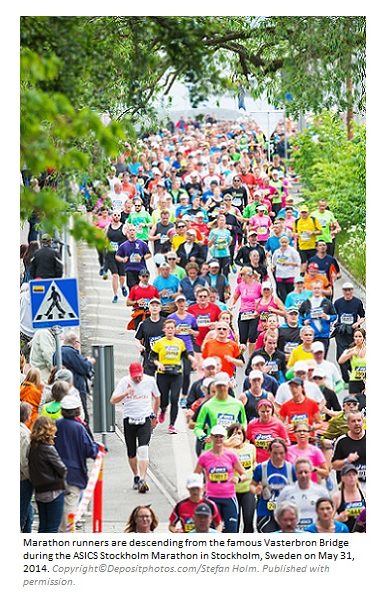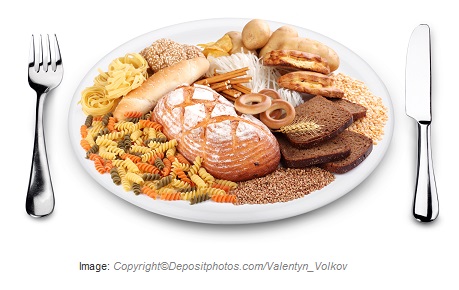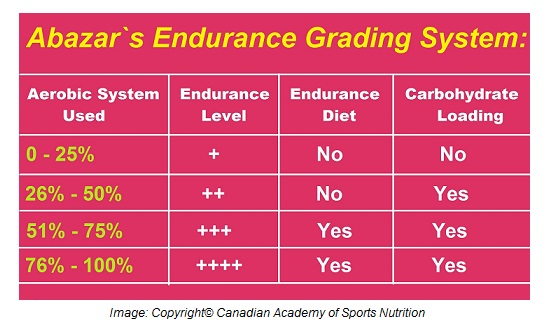Normal glycogen stores are not enough to provide the required energy during a high – intensity endurance competition or exercise. Depletion of glycogen stores causes inadequate fueling to the muscles, inducing fatigue and diminishing athletic performance.
Who Needs Carbohydrate Loading?
Athletes who participate in a high – intensity endurance sport event or training session require carbohydrate loading. As a rule of thumb, any sport events in which aerobic system is used more than 25% requires carbohydrate loading (see the table below), or it is recommended in an endurance sport event lasting longer than 90 minutes.

The following sport events require pre – competition carbohydrate loading:
- Athletics:
- 800 m.
- 1500 m.
- 5000 m.
- 10000 m.
- Marathon.
- 20 km walk.
- 50 km walk.
- 3000 m steeplechase.
- 400 m hurdle.
- Badminton.
- Baseball.
- Biathlon.
- Bobsleigh.
- Bodybuilding.
- Boxing.
- Canoe/Kayak: All Events, except:
- Canoe/Kayak Sprint, Women`s Events (K-1 200 m kayak single).
- Canoe/Kayak Sprint, Men`s Events (C-1 200 m canoe single, K-1 200 kayak single, and K-2 200 kayak double).
- Cycling: All Events, except BMX cycling events.
- Football (Soccer).
- Gymnastics: Acrobatic gymnastics (All Events).
- Hockey (field).
- Modern pentathlon.
- Rowing.
- Rugby (union, and league).
- Skating: All Events, except:
- Speed skating, 500 m.
- Short track speed skating, 500 m.
- Ski:
- Alpine skiing (all events).
- Snowboarding (snowboard cross).
- Cross – country skiing (sprint, 1.5 km, 10 km, 15 km, 4X10 km relay, team sprint, 7.5 km+7.5 km skiathlon, 15 km+15 km skiathlon, 30 km, 50 km).
- Swimming:
- Backstroke swimming: 200 m.
- Breaststroke swimming: 200 m.
- Butterfly swimming: 200 m.
- Freestyle swimming: 200 m, 4X100 m relay, 400 m, 800 m women, and 1500 m men.
- Medley swimming: 200 m individual, 400 m individual, and 4X200 m relay.
- Synchronized swimming: duet, and team.
- Marathon 10 km: men and women.
- Triathlon.
- Water polo.

Why Carbohydrate Loading?

Carbohydrate loading increases glycogen stores up to 300%, providing a sustained source of energy during competition or exercise and delaying exhaustion and fatigue. Carbohydrate loading prevents depleting of liver and muscle glycogen during intense exercise and helps prevent an in-competition blood sugar drop, which is famous among athletes as “bonking” or “hitting the wall”.
The main purpose of carbohydrate loading is to maximize glycogen storage in the body. The body`s upper limit for storing glycogen is 15 grams per kilogram of body weight, of which 80% is in the muscles and 20% in the liver.
For example, if your body weight is 60 kg, your body could store maximum 900 (15X60) grams of glycogen with 720 (900X80%) grams in the muscles and 180 (900X20%) grams in the liver.
How to Do Carbohydrate Loading?
There are two different regimens for carbohydrate loading:
- 3 – day regimen, and
- one – day regimen.
The 3 – Day Regimen Carb Loading:
This regimen is more common than one – day regimen. It should be started 72 hours to 96 hours (3 – 4 days) before competition. Here are the step by step procedures you should follow:
- Reduce intensity and duration of your training about 50%.
- Increase your daily intake of carbohydrate to 8 – 10 grams per kilogram of your body weight. In other words, 70% – 80% of your total daily calories should come from complex carbohydrates. The carbohydrates should be low in glycemic index (below 55). Sweet potatoes, brown rice, spaghetti, and quinoa are the preferred choices.

The One – Day Regimen Carb Loading:
This regimen is a modified version of the 3 – day regimen carb loading and can yield to the same results. At the Canadian Academy of Sports Nutrition, we call it “Depleting – Then – Reloading Glycogen Stores” (DRGS) Strategy. This regimen should be started 24 hours before competition.
Here are the step by step procedures you should follow:
- Do an extremely high intensity training 24 hours before the event to deplete glycogen stores. The reason for depleting glycogen stores first is to enhance the sensitivity of the muscle and liver cells to insulin.
- Take 2 grams of high glycemic index carbohydrate per kilogram of your body weight within 30 minutes after your intense training session. Watermelon is the preferred choice, as it has a high glycemic index and contains a high amount of citrulline (see “Watermelon” under the section of “Fruits”). A unique function of citrulline is to enhance re-absorption of lactic acid, which is carried to the liver to be converted to glucose.
- Then take 10 grams of complex carbohydrates per kilogram of your body weight over the next 24 hours. The carbohydrates should be low in glycemic index (below 55). Sweet potatoes,brown rice, spaghetti, and quinoa are the preferred choices.
You may choose your strategy of carbohydrate loading as per your convenience. Though some researchers question the ergogenic effect of carbohydrate loading, it has certainly a positive impact on athletic performance.
One of the unwanted effects of carbohydrate loading especially in the 3 – Day Regimen is to “gain” some weight, because the body would store 2.8 grams of water for every one gram of glycogen is stored.

